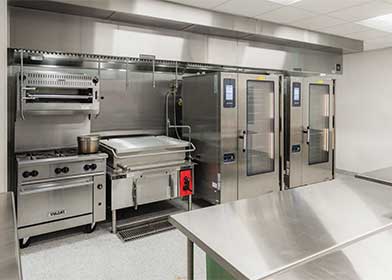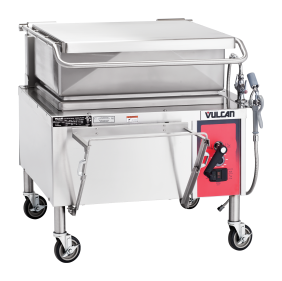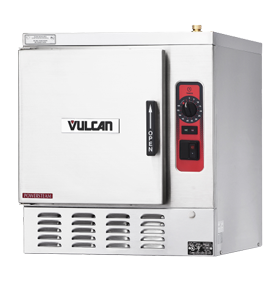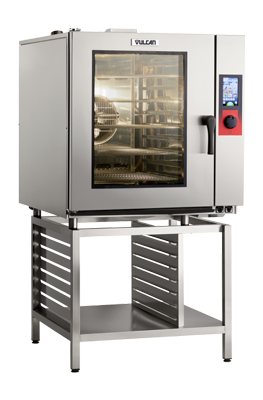
MAKING THE SWITCH TO SCRATCH COOKING
From California to Wisconsin, K-12 school systems across the country are making the switch from processed, heat-and-serve foods to scratch-cooking menus for students. This shift in school foodservice brings many benefits, most of all to the more than 30 million kids eating lunch at school each day.
Some advantages of scratch-cooking school foodservice programs include:
- Better nutrition. Cooking with fresh ingredients improves the nutritional value of the meals served to schools by eliminating the sodium and preservatives of processed foods. It also helps preserve the flavor of foods, enticing kids to eat school lunch rather than turn to other options.
- Increased participation. With better tasting food and more choices and variety in menu items, schools using scratch-cooking programs see benefits to their bottom line.
- Locally sourced ingredients. Cooking at the school allows foodservice directors the ability to support local farmers and businesses, which helps the local economy. An added benefit is the fresh food is better tasting and more enticing for kids.
K-12 School Foodservice Equipment Options
Converting a school kitchen to a scratch cooking program can be as simple as adding two pieces of foodservice equipment – a tilt skillet and a steamer (and perhaps increasing your refrigerated storage). Most schools doing heat-and-serve meals already have a convection oven and steam table. Adding these two additional pieces of foodservice equipment brings the flexibility and added cooking ability needed for a school scratch cooking program.


The benefit of the tilt skillet is its versatility. This one piece of equipment can perform multiple types of cooking for your school foodservice needs, including braising, grilling, baking or roasting. It can be used to create stir-fry dishes, fry chicken, or simmer pastas, soups and stews.
Those two are just the beginning. A combi-oven is another great addition to K-12 schools converting to scratch cooking programs. Combi-ovens cook with steam, convection, or a combination of both. They can be used for everything from baking bread, muffins and various desserts to roasting chickens and poaching fish. Add it to your school cookline, or if space is a factor, replace the convection oven with a combi-oven.

Advances in Foodservice Equipment Enhance School Scratch-Cooking Programs
Two things are driving the switch to scratch cooking in K-12 schools – a greater emphasis nationwide on better nutrition for kids, and improvements in school foodservice equipment. Items like the tilt skillet and combi-oven that do multiple types of cooking in one unit help save space and improve efficiencies, allowing school kitchens to produce a variety of menu items without investing in multiple pieces of cooking equipment. Other features make it easier to train staff and operate the equipment, for a better work environment. Some new features that improve efficiencies include:
- Automatic fill and draining on tilt skillet. No more carrying heavy equipment to pour out the water.
- Touchscreen control panels on combi-ovens make it easy to train staff and have consistent results.
- Wifi and Bluetooth enabled foodservice equipment, which enables directors to upload menus from anywhere, and also monitor equipment for proper use and potential service repair needs.
Creative Solutions to School Scratch-Cooking Conversions
Not every school has the ability or need to switch its kitchen to a complete scratch-cooking program. “Our K-12 school design experts at Boelter understand the different needs and accommodations of different school systems. We work with clients to design a kitchen and source equipment to best fit their program,” says Eric Chaplick, Director, Operations & Design.
Converting small spaces. Many schools built in the 1950s and 60s weren’t equipped with large kitchens, because at that time students often went home for lunch. But as times changed, those schools adapted. “We’ve worked with older schools to find space, such as a storage closet, to expand the kitchen to be able to add a couple of ovens and a prep table and improve offerings of their school foodservice operation,” says Jeanine Lopez, Director, Education for Boelter.
Utilizing centralized cooking. Another way to implement K-12 scratch-cooking programs is to create one fully equipped central kitchen, where most of the food is prepared, and then transported to the schools. This cost-effective approach helps minimize spending on school foodservice equipment. Designing the satellite kitchens to do more than just heat and serve can also improve buy-in at the school level. For example, prep tables to cut fresh fruits and vegetables on-site makes for a better presentation to students.
If you’re considering converting to a scratch-cooking school foodservice program, partnering with Boelter’s experienced K-12 team can bring additional knowledge and experience to the project. We understand the budget constraints and unique foodservice model of the K-12 segment, and are familiar with the rules and regulations surrounding school nutrition.